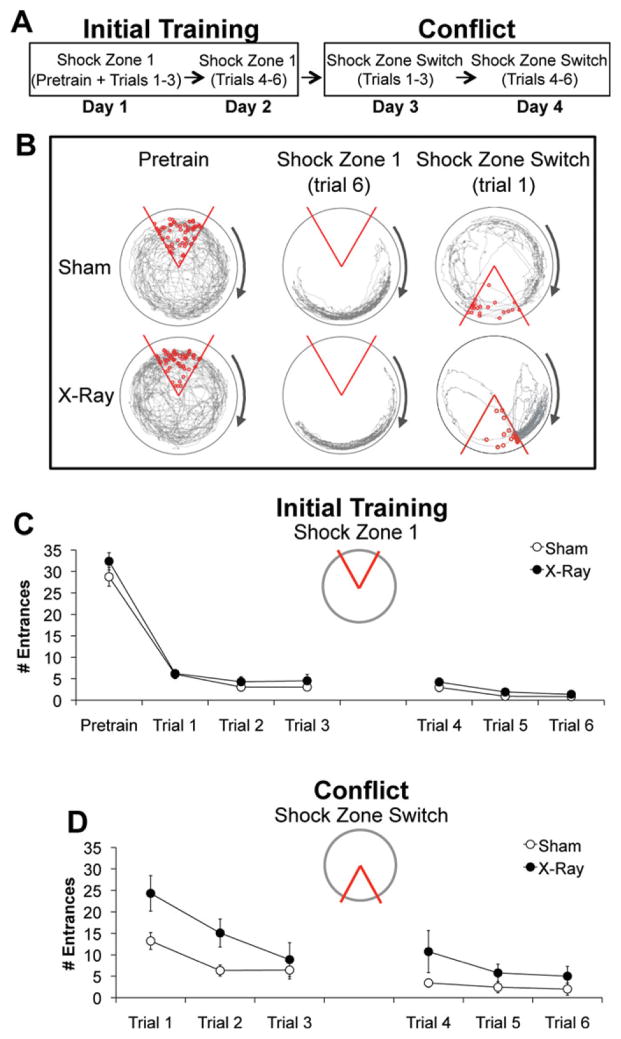FIGURE 3.
Irradiation impaired cognitive flexibility required during conflict trials. (A) Schematic of behavioral procedures. (B) Example behavior. The path (gray) of a representative X- and sham-irradiated mouse. Open red circles indicate where the animal was shocked during each trial. The shock was off during pretraining. (C) Initial training: X- (N = 13) and sham-irradiated (N = 13) mice did not differ in the average number of times they entered the inactive shock zone during pretraining (F1,24 = 1.47, P = 0.24) or the active shock zone during six training trials (F1, 24 = 1.72, P = 0.20). The significant effect of trial confirmed that performance in both groups improved with training (F5, 20 = 10.69, P < 0.0001). (D) Conflict condition: After the location of the shock zone was switched, irradiated mice entered the new location of the shock zone significantly more than controls (F1, 101 = 14.98, P < 0.01). The significant effect of trial indicates that both groups improved with additional training (F5,101 = 30.53, P < 0.01), although the lack of an interaction suggests that performance of irradiated mice was worse than controls across all six trials (F5,101 = 2.23, P = 0.14). Error bars represent S.E.M. [Color figure can be viewed in the online issue, which is available at wileyonlinelibrary.com.]

